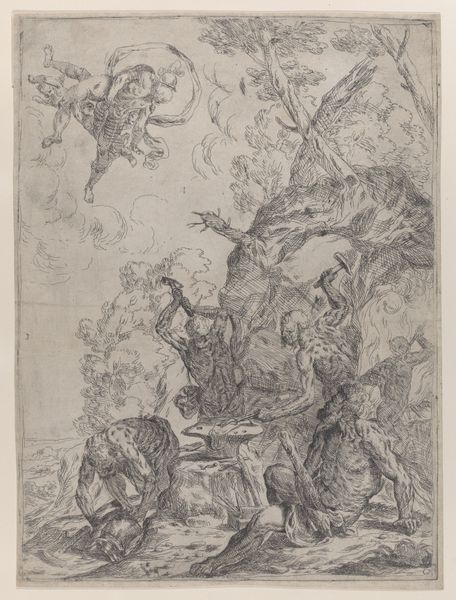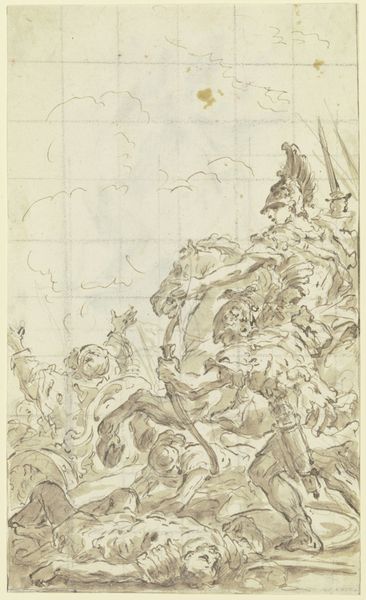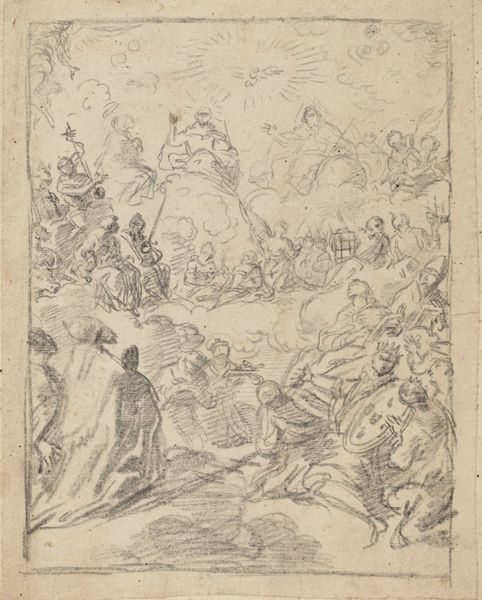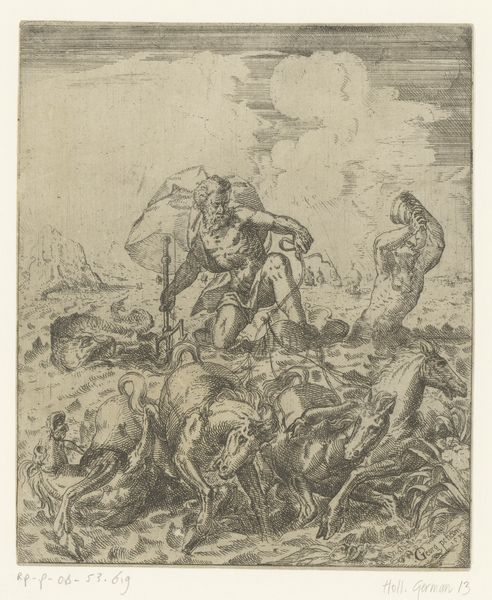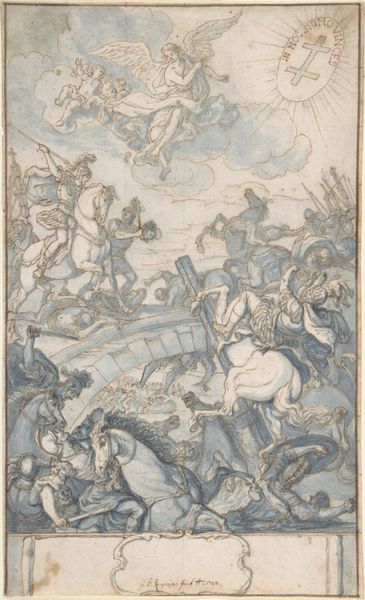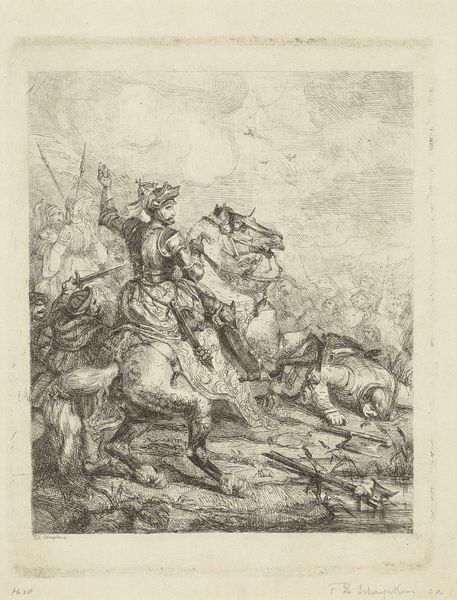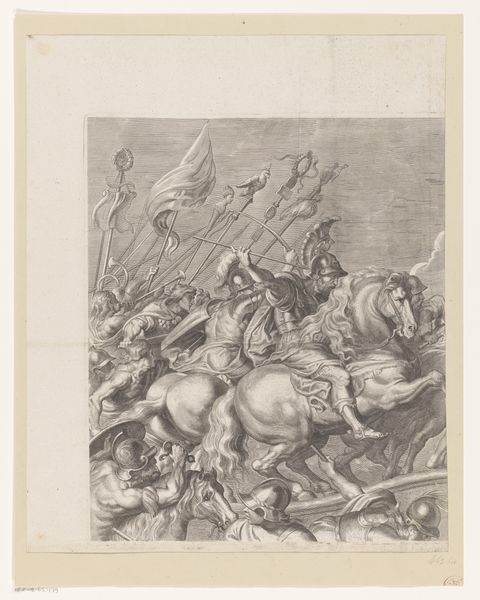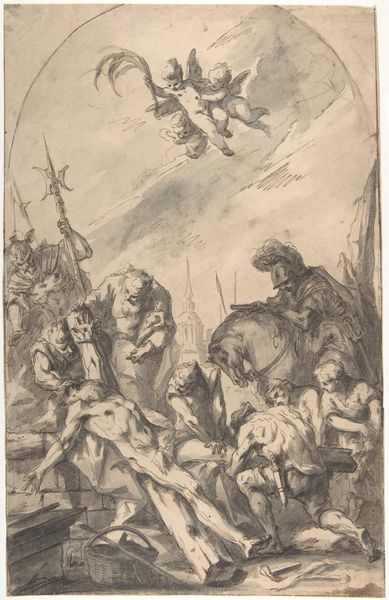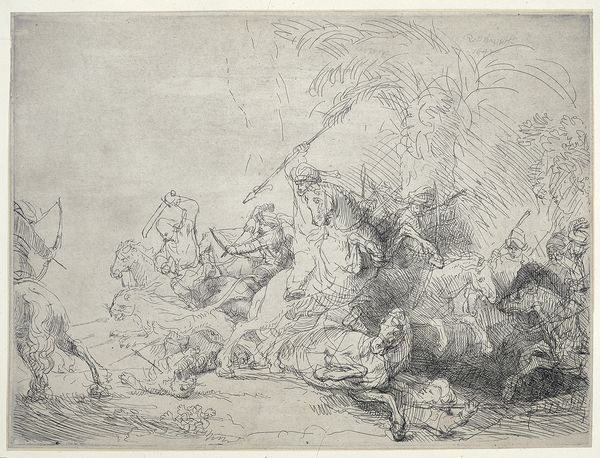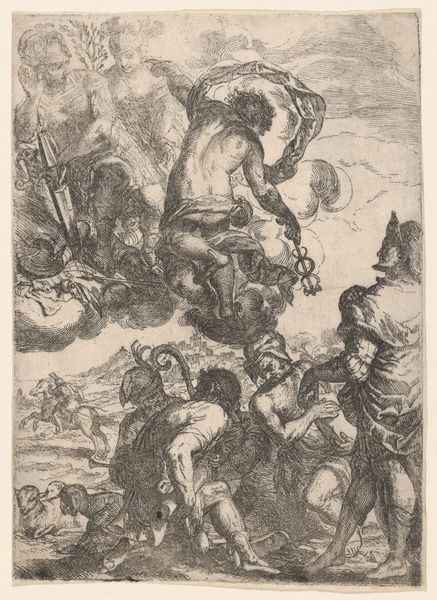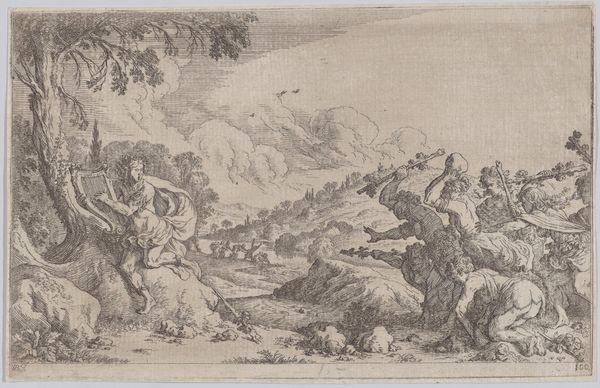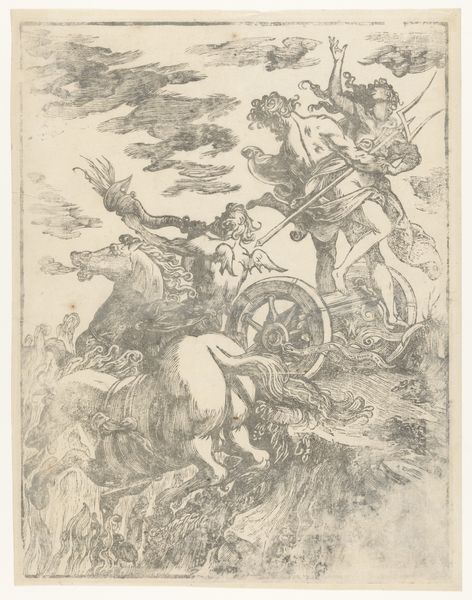
drawing, print, etching
#
drawing
#
narrative-art
#
baroque
# print
#
etching
#
landscape
#
figuration
#
soldier
#
horse
#
men
#
sketchbook drawing
#
history-painting
Dimensions: Plate: 8 1/8 × 5 1/8 in. (20.7 × 13 cm) Sheet (Trimmed): 8 7/16 × 5 1/4 in. (21.4 × 13.3 cm)
Copyright: Public Domain
Editor: This is "The Conversion of Saul," a work dating from 1645 to 1730 and attributed to H. Bem. It’s an etching, giving it a striking texture, but the subject matter is intense. The figures seem to be tumbling into chaos, while there's also this apparition in the clouds. I’m curious – how do you interpret this dramatic scene? Curator: It’s funny, isn't it? The most dramatic moments often look like complete messes, even though they carry such profound meaning. This piece captures that wonderfully chaotic intersection. For me, beyond the obvious religious narrative – Saul’s transformation into Paul – it’s a picture of sudden change. What does such a dramatic change really look and feel like? Bem seems to ask that question. Editor: The detail is amazing; the lines seem so frantic, mirroring the story, but where does the eye even start? There is a ton of visual information here. Curator: Exactly! It’s designed to be overwhelming. Look how Saul on horseback dominates the scene. It almost spills out! But our gaze eventually moves up to that ethereal light – that higher power breaking into our human drama, the light piercing through everything. Think about how etchings were produced: that sense of labor shows in the detail. Are we supposed to understand this light as something negative, a threat even, rather than salvation? Editor: I hadn’t thought of it like that before. The chaotic composition might mean this divine intervention isn’t necessarily welcomed, initially anyway! Curator: Precisely. It leaves you questioning the nature of such supposedly revelatory experiences, no? I’ve found that the more challenging a piece is to understand immediately, the more it has to offer. Editor: This definitely complicates my first reading. It's interesting to think of that light less as a beacon of hope and more as… disruptive force, at least at first! Curator: Yes! I think the ambiguity adds another powerful layer to the artwork, which means it’s always a fruitful work of art to consider carefully and come back to. It shifts in the same way the narrative shifts!
Comments
No comments
Be the first to comment and join the conversation on the ultimate creative platform.
